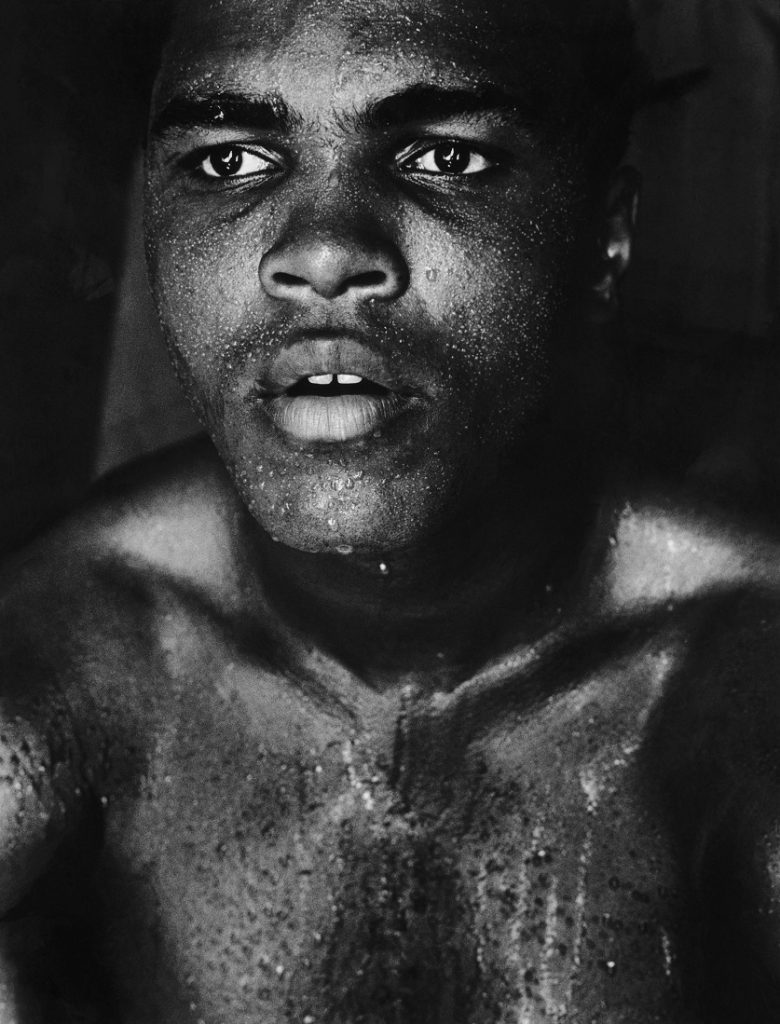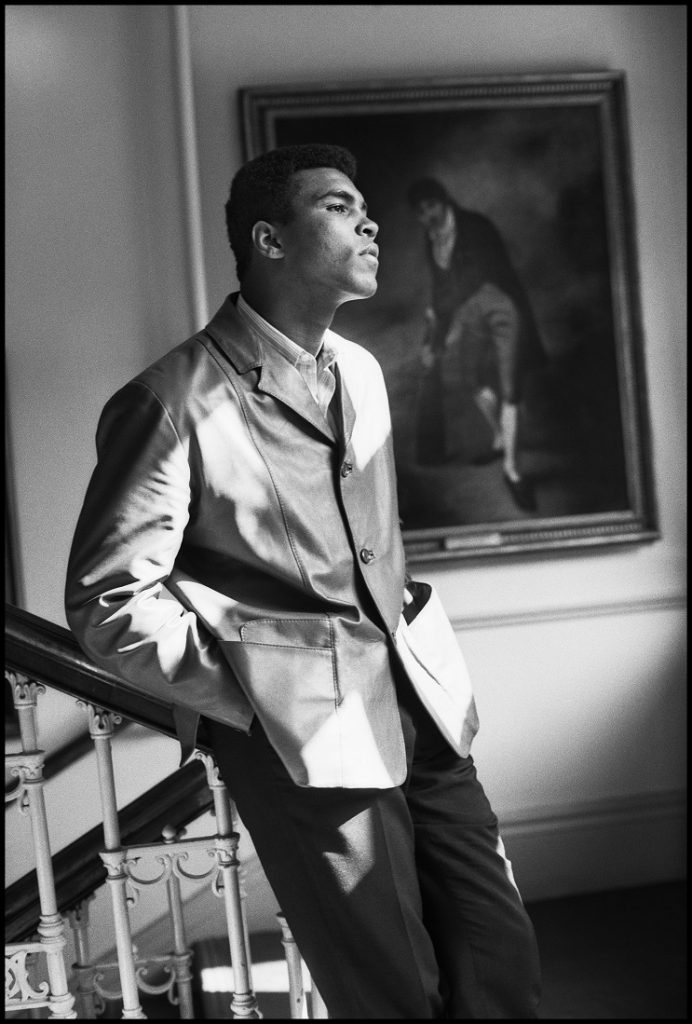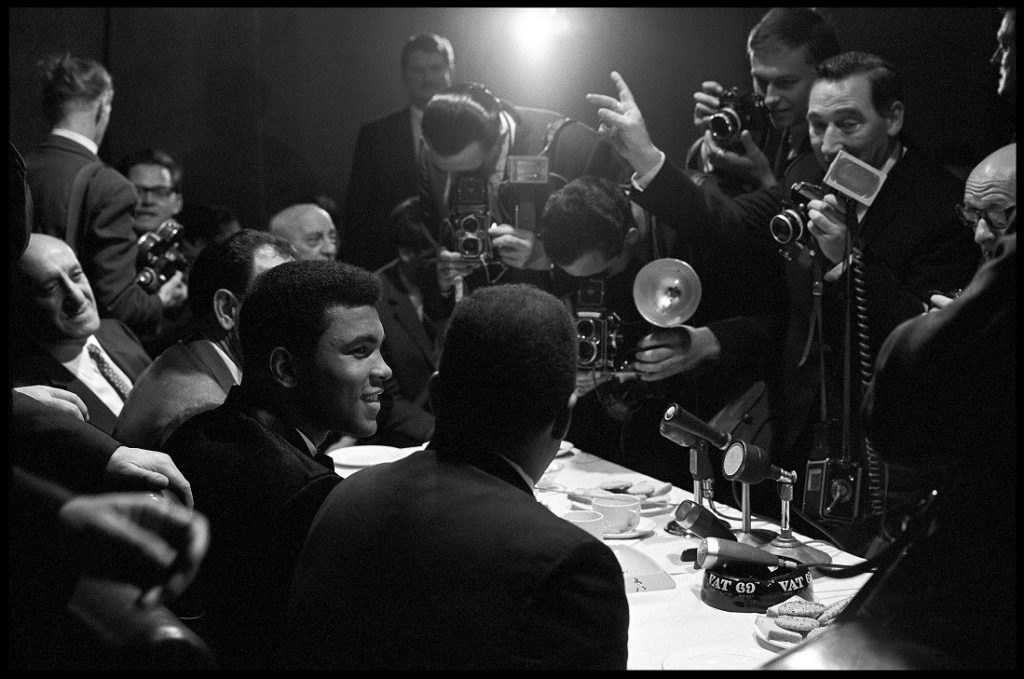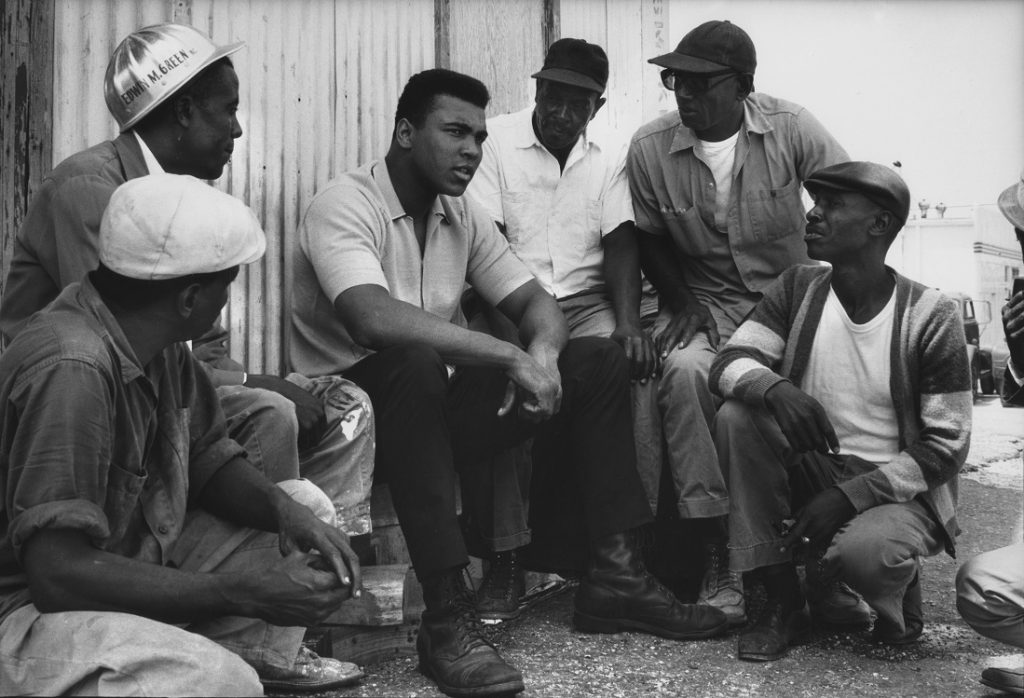Boxing great Muhammed Ali—the man, the myth, the legend—was always known for having a larger-than-life personality. He was also an embattled icon for nearly everything he did outside the ring. A new exhibit at The Nelson-Atkins Museum of Art showcases photos of an Ali many people didn’t know—a reserved, introspective man who always seemed to be under siege for his social/political points of view.

Those behind-the-scenes, never-before-seen photos are courtesy of Gordon Parks, a long-time photographer with Life Magazine. The Fort Scott, Kansas, native was instrumental in helping shape Ali’s persona during a time when all Ali seemingly wanted to do was mug to the camera and exude blustery swagger. “Gordon Parks was a long-time photographer, the only full-time, black staff photographer at Life magazine,” says curator April Watson. “He had a lot of power and influence at Life—and I think he saw in Ali a younger man, a hero-in-the-rough, but he was not exactly convinced about Ali’s bravado and views because Parks was from another generation.”

In two different shoots—the first in 1966 and the second in 1970—Parks took it upon himself to give the American public a never-before-seen look at Ali’s everyday life. “Parks saw the power, the charisma that Ali had and shaped a portrait that was ultimately a sympathetic, nuanced portrait of him,” says Watson. His photos were destined “for a readership that wasn’t necessarily very convinced of Ali’s persona at that particular time in American history.”

The 1966 feature is by far the bigger project. “Parks took all the photographs, but he also wrote the accompanying essay in Life magazine, and that was a deliberate decision on his part to control the story, the narrative,” says Watson. Little known fact? Parks took 850 exposures, but only three were published. “A lot of these images here have never been shown before—all slice-of-life. What you see is Parks covering Ali in training in 1966, his training regimen, accompanying him to a Nation of Islam meeting. Parks follows him around his Miami neighborhood and in his bungalow. That’s a testament to how much Ali respected him—allowing him in his personal, intimate space and letting down his guard.”

The exhibit—which opened on Valentine’s Day—has been getting rave reviews. It’s a perfect chance for Nelson-Atkins to shine a spotlight on Parks’ talents. “He’s an incredibly important photographer, composer, film director,” says Watson. “He’s a figure you should celebrate every generation. We thought Muhammed Ali would be a great subject as well—as many people know him or some version of him. He’s charismatic, larger than life. I really think [Parks] got as close as one can to showing who the real Ali was at that time and place. And that’s what I hope people to come away with—a celebration of these two great Americans.”
Exhibition: Gordon Parks X Muhammad Ali: The Image of a Champion, 1966 | 1970
Now thru July 5th at The Nelson-Atkins Museum of Art


